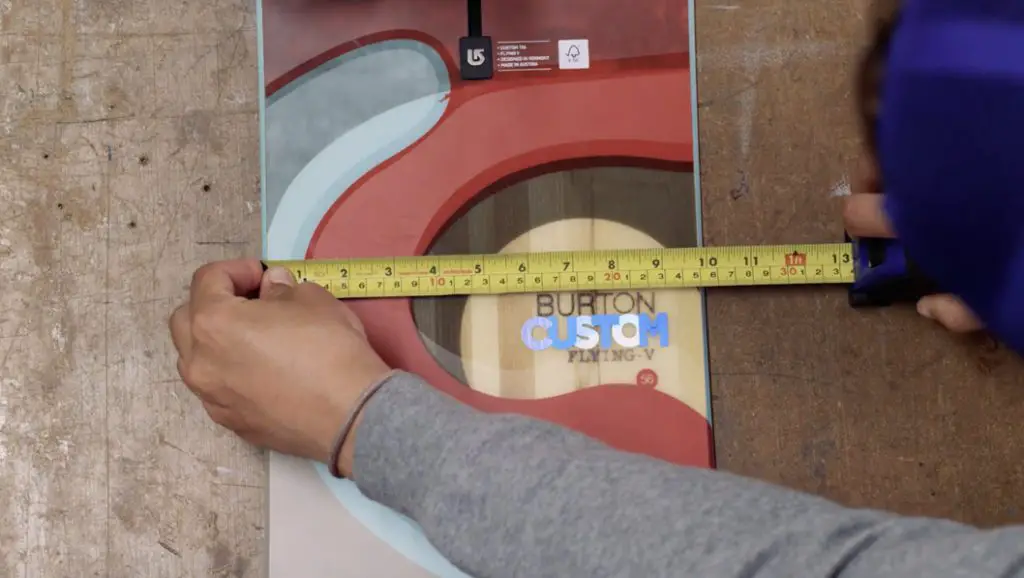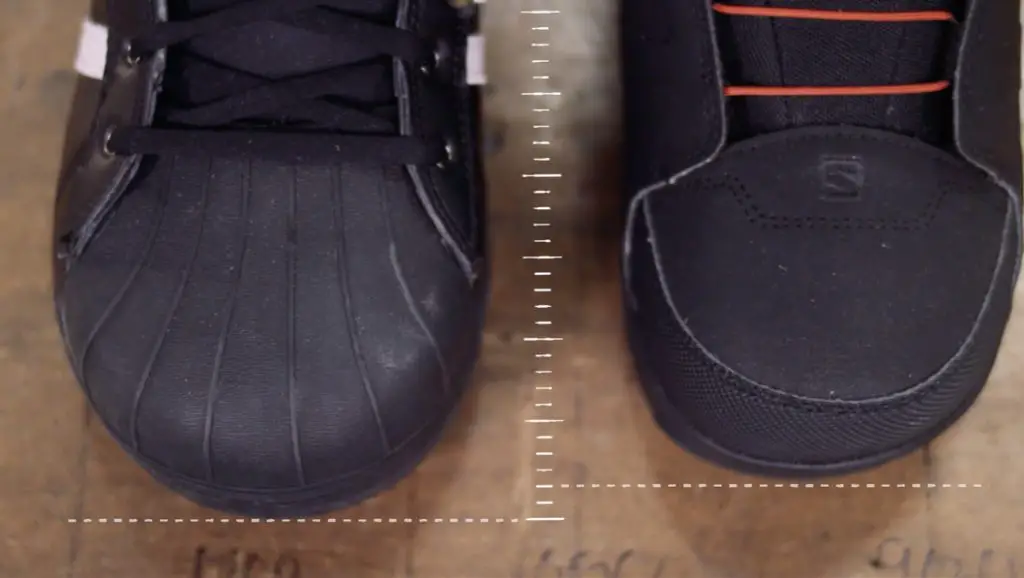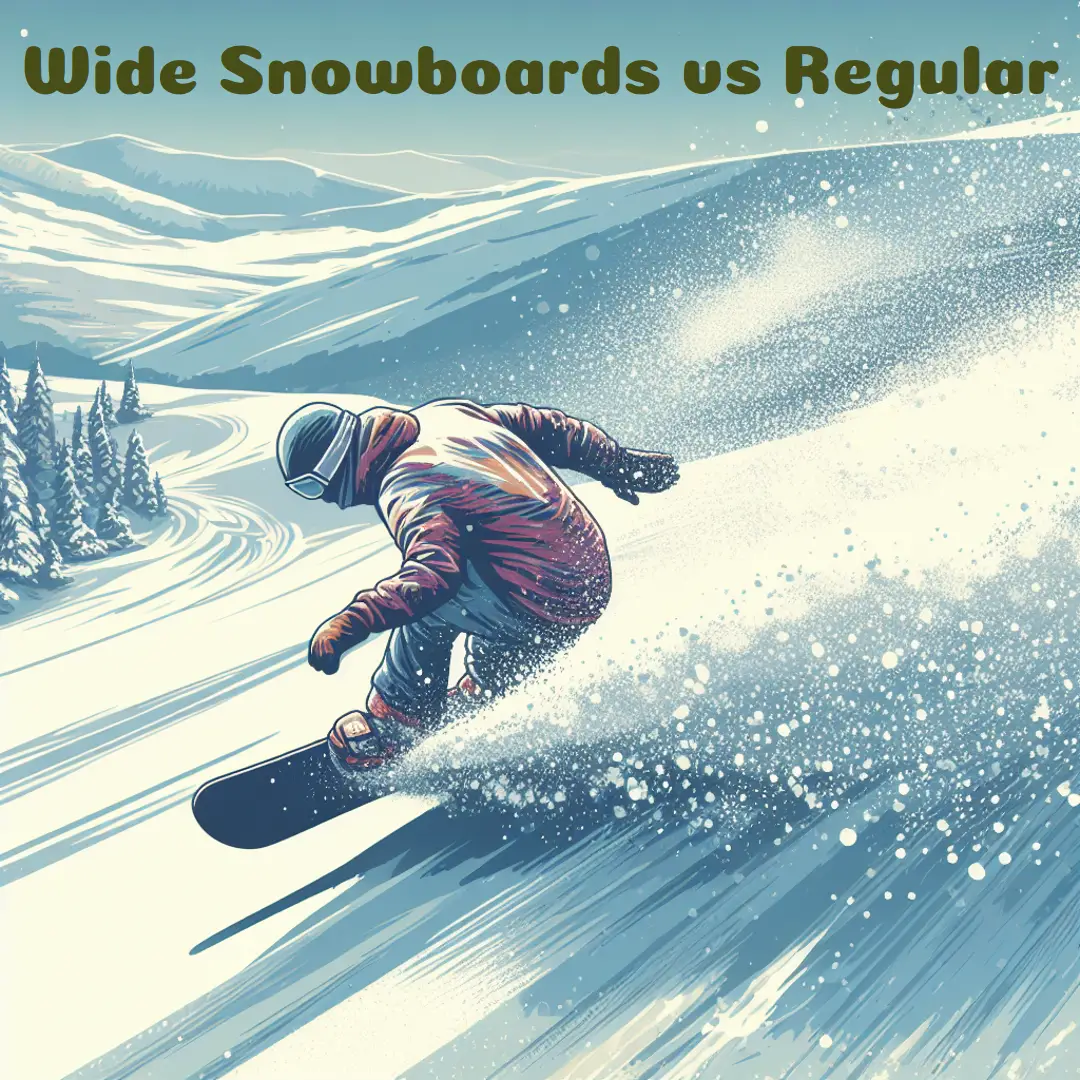When gearing up for snowboarding season, one key decision involves snowboard width – whether to go with a wide board or standard width. There are distinct performance differences in control, stability, and swagger between wide and regular options.
Determining optimum snowboard width depends largely on your boot size, riding style, and height/weight. This article compares the key factors of wide versus regular boards to make choosing the best fit easier so you can shred with confidence!
Table of Contents
What Qualifies a Snowboard as Wide?

Before pitting wide against regular boards, let’s define what makes a snowboard wide in the first place:
Wide Boards Have a Midsection Waist Width Over 260mm
Most regular men’s snowboards have waist widths around 250mm which suits size 8 – 10 boots. Wide boards measure 26cm+ capable of balancing bigger boots. Some ultra-wide models exceed 27.5cm for boots 13+.
Designed for Size 10+ Boots
In general, if your snowboard boots are above US size 10 for men or 8 for women, a wide board helps prevent toe or heel drag while carving. Smaller boots don’t require the extra width.
Require Stance Adjustments
With increased widths, bindings also set further apart so wide boards handle best with longer stances using a multi-hole setting.
Now that we understand how to categorize wide snowboards, let’s examine the exact advantages — and disadvantages — compared to regular width alternatives.
Pros of Riding a Wide Snowboard

Here are some potential benefits of choosing a snowboard specifically labeled as wide:
1. More Boot Clearance
The defining upside of wide boards ties directly to providing extra space for bigger boots between toe and heel edges without overhang or dragging. This prevents catching edges.
2. Increased Stability
Added width translates to a longer effective edge for increased edge contact. This lends extra grip and stability for charging hard or straight-lining in uneven conditions.
3 for carving cleaner lines
That boosted edge contact also enhances the ability to sink edges deeper and lay trenches for those smooth curving turns associated with carving progression.
4. Float Better in Powder
Thanks to the increased surface area, wide snowboards tend to float more effortlessly above the pow without nosediving compared to narrower shapes of equal length.
5. Better Camber Response
Optimally set bindings on a wide board enhance leverage applied to the camber or rocker profile. This makes flexing the board in and out of turns more responsive.
Of course added width doesn’t automatically make someone a better rider. But choosing a properly wide snowboard can help intermediate to advanced level players progress faster by removing limitations.
Cons of Riding a Wide Board
Those benefits of wide snowboards don’t come without some tradeoffs, however. Here are downsides to also consider before committing to a board labeled wide:
1. Heavier and Slower Edge to Edge
Increasing board width adds weight. And that decreased agility can compromise quick edge-to-edge transitions if carving tight lines or trees.
2. Requires Advanced Technique
Manhandling those longer and heavier edges demands honed technique – from clean flexing to mastering sidecut radius. Novices may find standard widths more forgiving.
3. Not Ideal for Jibs/Tricks
The typical wide board lacks poppy playfulness for popping off kickers or tweaking jib lines compared to park boards. If freestyling, go regular width.
4. Limited Graphics/Model Options
Since fewer riders need wider boards, companies offer fewer graphics/models. Finding your preferred shape and graphic gets harder with wide boards. Shop early!
5. More Expensive
Special sizing and niche demand also makes wide boards cost more on average assuming all else equal. High quality wides run $100+ over regular versions.
Weighing additional control/grip against agility compromises helps determine if worth bumping up to an officially wide snowboard for your specs and riding objectives.
Factors for Choosing Wide vs Regular Board Width
Rather than blindly following some width calculation formula, consider the interplay of these personalized performance factors:
1. Boot Size
Matching board width to boot dimensions remains essential. Those rocking small size 7 or women’s size 6 boots almost never require wide. But folks with boots 11+ men’s would feel far more confident with the extra width.
2. Bindings & Stance
Since bindings mount further apart on wide boards, also factor your preferred stance elements like angles and widths. Wider stances (21+ inches) that allow centering bigger boots over sidecut make more sense than trying to squeeze size 12s into a 20 inch narrow setting.
3. Riding Style & Terrain Preferences
Are you an all mountain freestyle rider dipping occasionally into trees and steeps? Or more of hard charging alpine carver always angling fall lines looking for that next exhilarating speed tuck? Dissecting your personal riding DNA helps determine if nimble quickness or utmost stability takes priority.
4. Current Skill Level
Generally, intermediates still developing competent turns often fare better improving technique on standard widths. But for experts who have the chops to fully engage those wider edges yet crave more grip at speed, wide boards make perfect sense.
5. Physique/Strength
This factors more for women but also lighter male riders. Can you reliably bend and manipulate a longer edge? If having trouble already getting edges up on regular widths, don’t jump to a wide quite yet!
Finding the overlap between all those preferences across boot fit, stance tendencies, riding objectives for your experience level reveals whether a wide board suits you best.
Width Calculation Formulas
While personal preferences should drive board width selection, for further guidance here are some effective snowboard sizing calculators:
Waist Width = (foot size in CM x 2) + 2
So if your foot measures 29cm long, the formula recommends waist width around 60cm or 23.5 inches. Round up for comfort room.
Waist Width = (foot size in IN x 3) + 4
Entering an 11 inch foot = 23 inch waist width minimum recommended
Waist Width > Boot Size (cm or mm)
Simply make sure chosen board width exceeds barefoot measurement.
These quick width approximation rules help narrow down boards guaranteed to give big boots adequate real estate. Let’s compare how they might look for different boot sizes.
| Boot Size | Formula 1 | Formula 2 |
|---|---|---|
| 7 Mens | 24.5cm | 21” |
| 10 Mens | 26cm | 22” |
| 12 Mens | 28cm | 25” |
| 10 Womens | 26cm | 22” |
While following math formulas works decently well, no substitute exists for trying out boards in person to understand width impressions subjectively.
FAQs – Wide Snowboard Questions
Here are answers to some frequently asked questions about wide snowboards:
Do all board brands use the same width sizing?
No, while most classify 260mm+ waist as “wide”, some brands like Burton Snowboards call boards 242-44mm mid-wide and reserve “wide” for extreme sizing 260mm+. So check each specific model.
If regular boards max out my boots, can I still ride them?
If toes or heels slightly drag when tilted but not across entire edge, you can sometimes downsize boots or just live with mild overhang. But purists insist properly fitted width matches boots cleanly.
Will width slow me down compared to what I’m used to?
This depends on flex and camber profiles more than width alone. But wide boards aimed at carving and stability will feel less nimble if used to a soft park board. Adjust expectations and technique rather than forcing a speed demon.
Can I still butter and play on wide boards?
While tricky compared to a rockered park stick, the skillful can still manual and butter well on any quality wide board with continuous rocker and sufficient flex.
Matching your specs and preferences to board width gives you the green light to charge the entire mountain confidently. Understanding these finer optimization factors makes the decision easier while unleashing your personal riding potential.
Soon you’ll be laying stylish trenches, boosted by the power appropriately wider platforms afford. Then watch out!
Conclusion
Choosing snowboard width ultimately comes down to carefully weighing your boot size, stance tendencies, riding style objectives and strength/skill levels. Rather than fixating on board width figures alone, make an informed personal decision.
In general, adults with size 10+ (men’s) or 8+ (women’s) boots need enhanced leverage control and stability that wide boards over 260mm waist offer. Just be sure your stance, skill level and terrain appetites also mesh well with the moderate tradeoffs.
For most riders under size 10 men’s boots, regularly width boards still ride and feel best for all-around versatility
